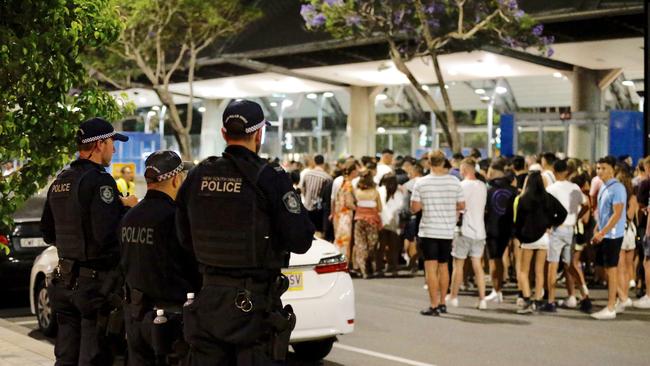Police face legal minefield with officers told to stay clear of drug bins
Police officers will be ordered to stay away from drug amnesty bins at ‘high-risk’ music festivals across NSW this summer

Police officers will be ordered to divert their foot patrols and stay away from drug amnesty bins being rolled out at “high-risk” music festivals across NSW this summer.
Commanders will issue the order ahead of NYE in the Park, an event being held in the inner Sydney suburb of Broadway on Tuesday where the bins will be trialled for the first time. Similar tests of the amnesty bins are slated for Field Day, on January 1, and at FOMO Festival on January 11.
The wider police operations are unlikely to differ markedly from previous years, with commanders preparing to deploy sniffer dogs, and uniformed and undercover officers.
But they will deliberately avoid the bins in a bid to encourage festival goers to jettison illicit substances without fear of arrest.
“Officers will be directed not to ordinarily patrol or interact with the bins,” Assistant Commissioner Michael Willing said.
“We don’t want to see police standing around where the bins are and stopping people from disposing personal-use drugs.”
Referring to cases of drug possession in the wider area, which are expected to test the boundaries of the new policy, he added: “Common sense has to be used.”
One scenario officers anticipate is that people will claim to be en route to a bin if they are caught with drugs hidden on them. Mr Willing said factors such as distance from a bin and the amount of drugs being carried would dictate the police response.
“Those cases are going to be dealt with on a case-by-case basis,” he said.
Announced in early December, the amnesty bins are a last-minute policy change imposed on government agencies and industry stakeholders, including NSW Health, the NSW Police Force, and the festival organisers.
Deployed as part of a 12-month trial, the bins are ostensibly the responsibility of NSW Health. But in practice they pose challenges for several groups. Under pressure to prevent deaths, festival organisers have scrambled to implement the government’s directive.
“We’ve been given three weeks’ notice,” said Julia Robinson, general manager of the Australian Festival Association, which represents about 65 industry members.
There are differences of opinion in relation to the location of the bins and whether the strategy will be effective. In most cases they will be placed near the entrance to festivals and inside the grounds, close to the medical tent.
“I don’t know how successful they will be in the way they’ve been worked out operationally,” Ms Robinson said. “Any last-minute change to a plan that’s been in place for 12 months is tricky.”
Months after a NSW coroner recommended an overhaul of festival practices in the wake of several deaths, the issue has firmed as a test for NSW Premier Gladys Berejiklian.
The coroner’s recommendations took aim at a number of targets: the lack of pill testing at festivals, the spirit of police operations, the strip searching of revellers, and the use of sniffer dogs. Recommendations made on these issues were not adopted, but amnesty bins, along with other initiatives focusing on health and education, formed a compromise response. MDMA, or ecstasy, remains the drug of choice for 18 to 24-year-olds attending the festivals, followed by cannabis, ketamine and cocaine.
Estimates drawn from a survey conducted by NSW Health found at least 70 per cent of young people attended music festivals with the intention of using drugs.
The inquest heard that 25 music festivals took place in 2018 and 2019, during which five fatalities were recorded, an escalation in mortality rates that amounted to nearly half of the 12 deaths recorded at music festivals over the previous decade.
Complicating the forthcoming festival season is the emergence of higher-dose tablets recently found in circulation.
NSW Health officials issued an alert last weekend about light blue “Lego” tablets with double and even triple the standard dosage. Previous warning had been issued about Tesla-branded tablets. One notable difference in this year’s approach is that festival organisers and government agencies are working directly with each other, a break from previous ad hoc arrangements in which festivals were organised between individual councils and police area commands.
Festivals will also be triaged according to their perceived safety risk, a calculation that weighs the projected crowd size with the weather forecasts, the location, and the type of music — folk, hip-hop, electronic and dance — being played.
Police strengths, medical allocations, transport plans, entries and exit points, or the need for a formal command structure, will also be quantified using this formula, which seeks to standardise what, until now, has resulted in council districts and police commanders demanding more of some festival organisers than others.



To join the conversation, please log in. Don't have an account? Register
Join the conversation, you are commenting as Logout